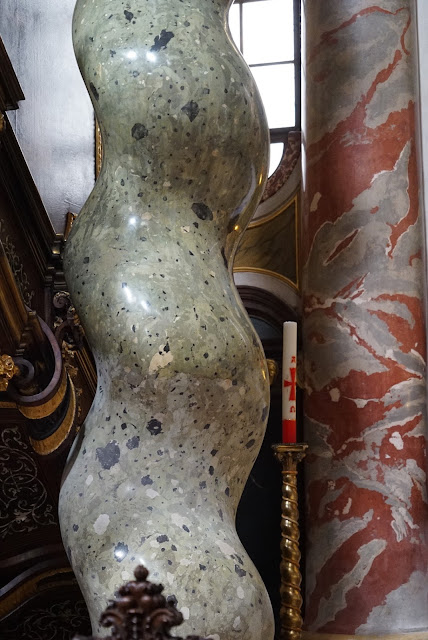Part of the Hofburg Palace:
The Neo-Gothic town hall:
The Neo-Classical Parliament with all its statues:
Put them together:
The imperial figures:
But, if you look harder you can see some more interesting newer architecture from the turn of the century, including this work by Adolf Loos, the Loos House, famous for its lack of window decorations. (In fact, he was required to add the window boxes to appease civic indignation about the lack of proper decoration.)
Otto Wagner's work is the most famous from this era, including his S-Bahn station:
And his postal savings bank:
Details:
I saw it on Sunday, so unfortunately I did not get a chance to go inside.
Other buildings and facades seen on my walks:
I saw a few decorative representations of workers:
This is one of Vienna's flak towers, built during WW2 and virtually impossible to tear down. This one has been repurposed as an aquarium, and adorned with the commissioned conceptual art seen in this picture.
This is the library of the technical university, and these are apparently owl sculptures. Meaning wisdom?
This looks like a building in Tokyo:
And this was the view looking up from the narrow street next to our apartment:
And the old and the new, and a red, yellow, and blue?






















































